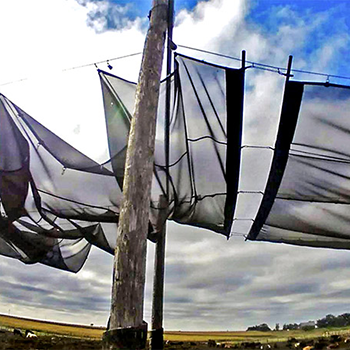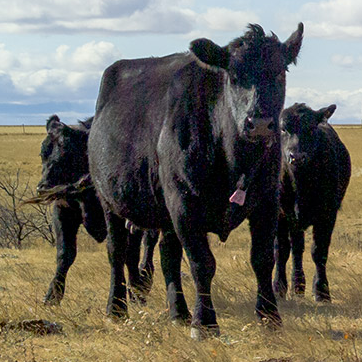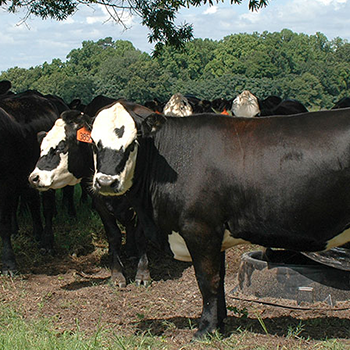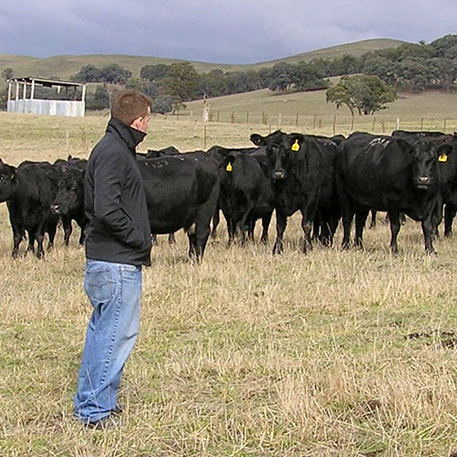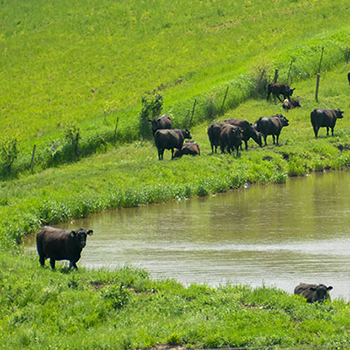Risks and Responsibilities
At-home animal slaughter involves risk, challenges.
Supply chain and distribution challenges are leaving producers stranded with animals ready for market but no place to go. Some may consider custom slaughter or butchering at home as a way to relieve this pressure. While producers are able to slaughter their own animals, this practice comes with risks and responsibilities, says Bailey Harsh, assistant professor, University of Illinois Department of Animal Science, Meat Science and Muscle Biology.
The Meat and Poultry Inspection Act exempts producers from inspection requirements when slaughtering their own animal on their own property for their own consumption, Harsh says. The producer must own the animal for at least 30 days prior to slaughter and cannot sell the meat to anyone.
If the meat is being sold, animals must be slaughtered and processed in a licensed facility under inspection by the state department of agriculture or by USDA. This inspection provides consumers assurance that meat is safe to eat, Harsh says. Meat and poultry products sold must be prepared from meat that originated from an approved source. A state or federal inspection mark on the product ensures the product comes from an approved source.
Home slaughter should only be done by a trained person with experience in humane animal handling and stunning practices, sanitary dressing procedures, and meat cuts. University of Illinois Extension has two resources related to custom and home slaughtering.
Ensuring animals are rendered insensible to pain prior to slaughter through stunning, or enacting the mode of death efficiently and quickly is important. The American Veterinary Medical Association’s Guidelines for Humane Slaughter include important considerations and methods.
“Without proper training, setup, equipment and facilities, personal safety and food safety risks may outweigh the benefits of home slaughter,” Harsh says. “Outdoor processing can pose food safety hazards resulting from temperature abuse and cross-contamination. Improper slaughter procedures and inadequate sanitation can, and will, pose food safety risks resulting in illness or even death.”
Animals that are diseased, disabled, downed or dead should not be slaughtered.
Weather is a prime factor in deciding to conduct home slaughter.
“It is important to conduct dressing procedures during the coolest part of the day with adequate visibility,” Harsh says. “Bacteria grow and multiply easily above 40° F. Accordingly, home slaughter should only take place when the outside temperature is below 40° F.”
The slaughter and fabrication process will generate a large amount of product that will need refrigeration. On average, a 1,200-pound (lb.) steer can generate 400-500 lb. of retail cuts.
“The sooner you can package and freeze products, the less the potential for risk,” Harsh says. “Due to the time required to chill larger cuts, freezing is a safer choice than refrigerating.”
Minimize exposure of the carcass to external pests and package quickly after slaughter to reduce risk of contamination.
Cleanliness is vital. To reduce contamination, knives and handsaws should be washed frequently, especially when moving from external cutting of the skin or hide to internal cutting. Use clean, potable water from a pressured hose to wash carcasses, tools and equipment. Carcasses should be rinsed starting from the top and working downward. Boiling water is recommended for sanitizing knives during the slaughter process.
Soap should be used to wash equipment, tools and hands.
“Wash hands and forearms frequently, in between steps, to minimize cross-contamination,” Harsh says. “Dishwashing soap is preferable due to its ability to cut through grease and fat on equipment, tools and hands.”
Aprons made of plastic or rubber may help prevent cross-contamination between clothing and carcasses. However, this only reduces cross-contamination risks if aprons are washed frequently during the slaughter process. Any tables used should be made of a nonporous material for ease of cleaning.
Carcasses should be inspected for three major contaminants: fecal material, digestive contents and milk.
“If observed, any tissue in contact with these contaminants must be cut away and disposed,” says Harsh. “These contaminants may harbor pathogenic bacteria that pose serious food safety risks.”
People with weakened immune systems are at risk from foodborne illnesses, as well as pregnant women, children under 1 year of age, and adults 50 and older with underlying medical conditions.
“The information provided is intended to present the importance of food safety and associated risks,” says Harsh. “It is not intended to explain the process of dressing procedures, nor promote this activity. Meat processing is complicated. It should not be taken lightly. People involved must understand that carelessness is not an option with food safety.”
Editor’s note: Judy Mae Bingman is a communications and marketing manager for the University of Illinois Extension.
